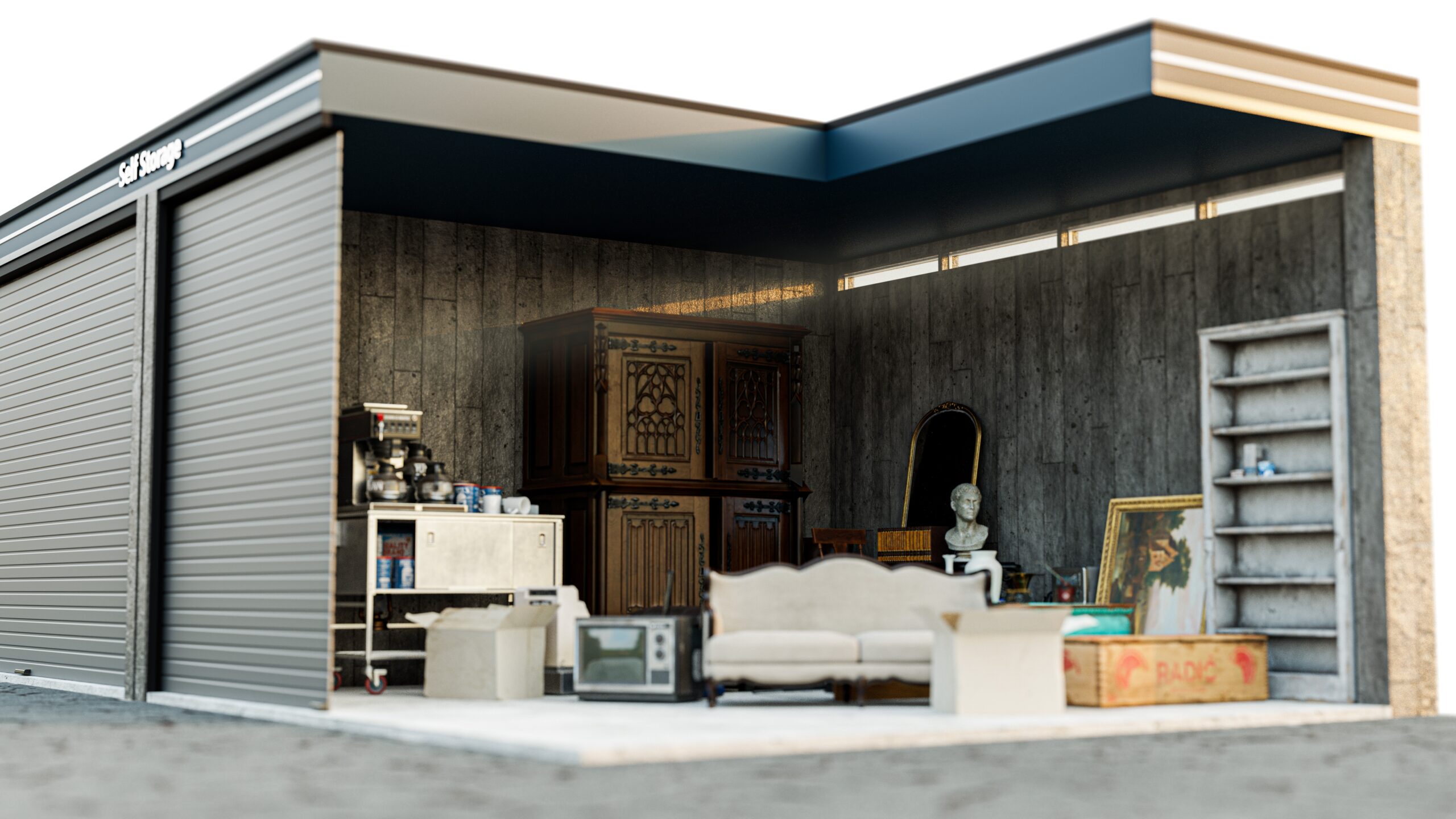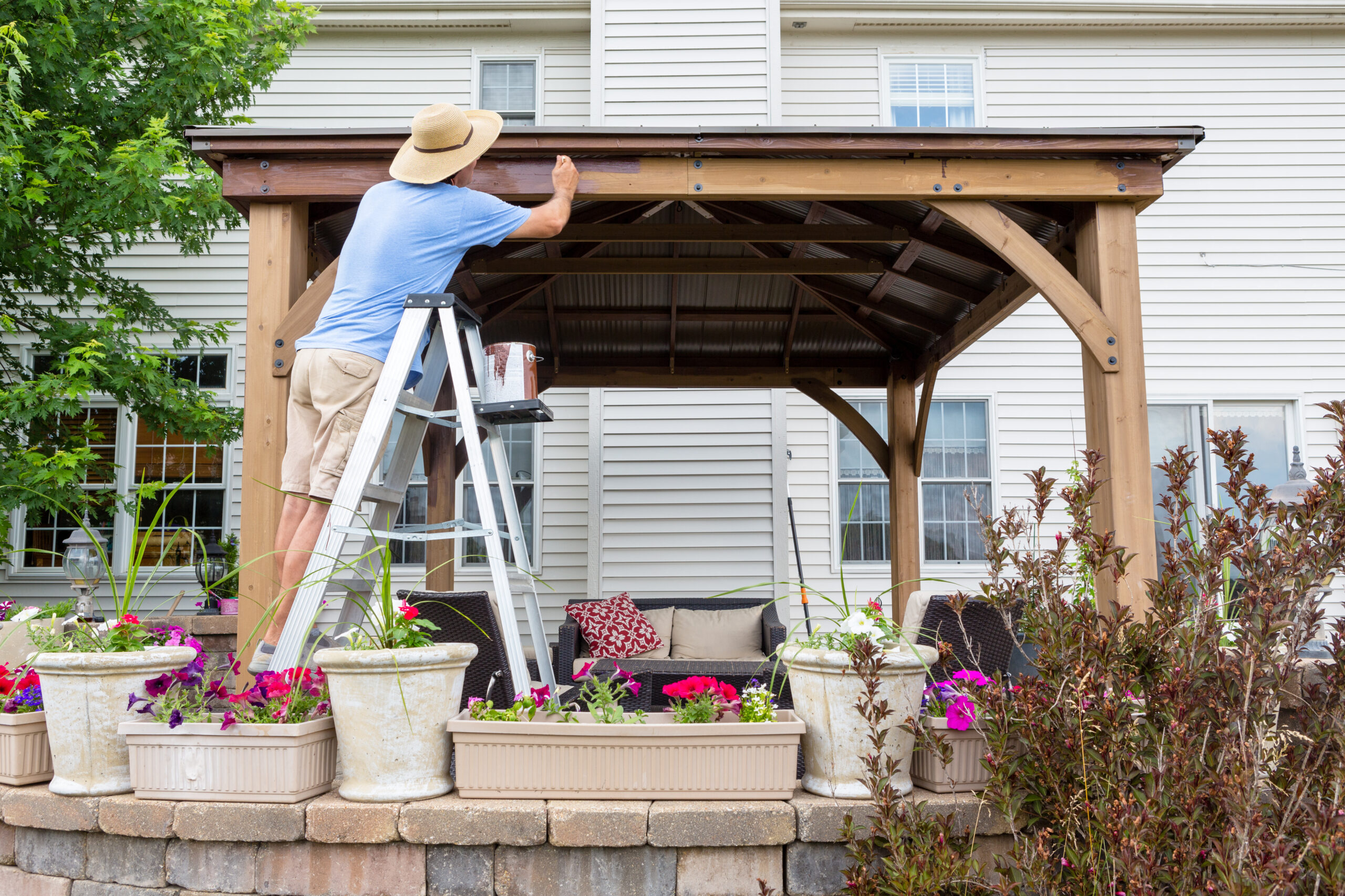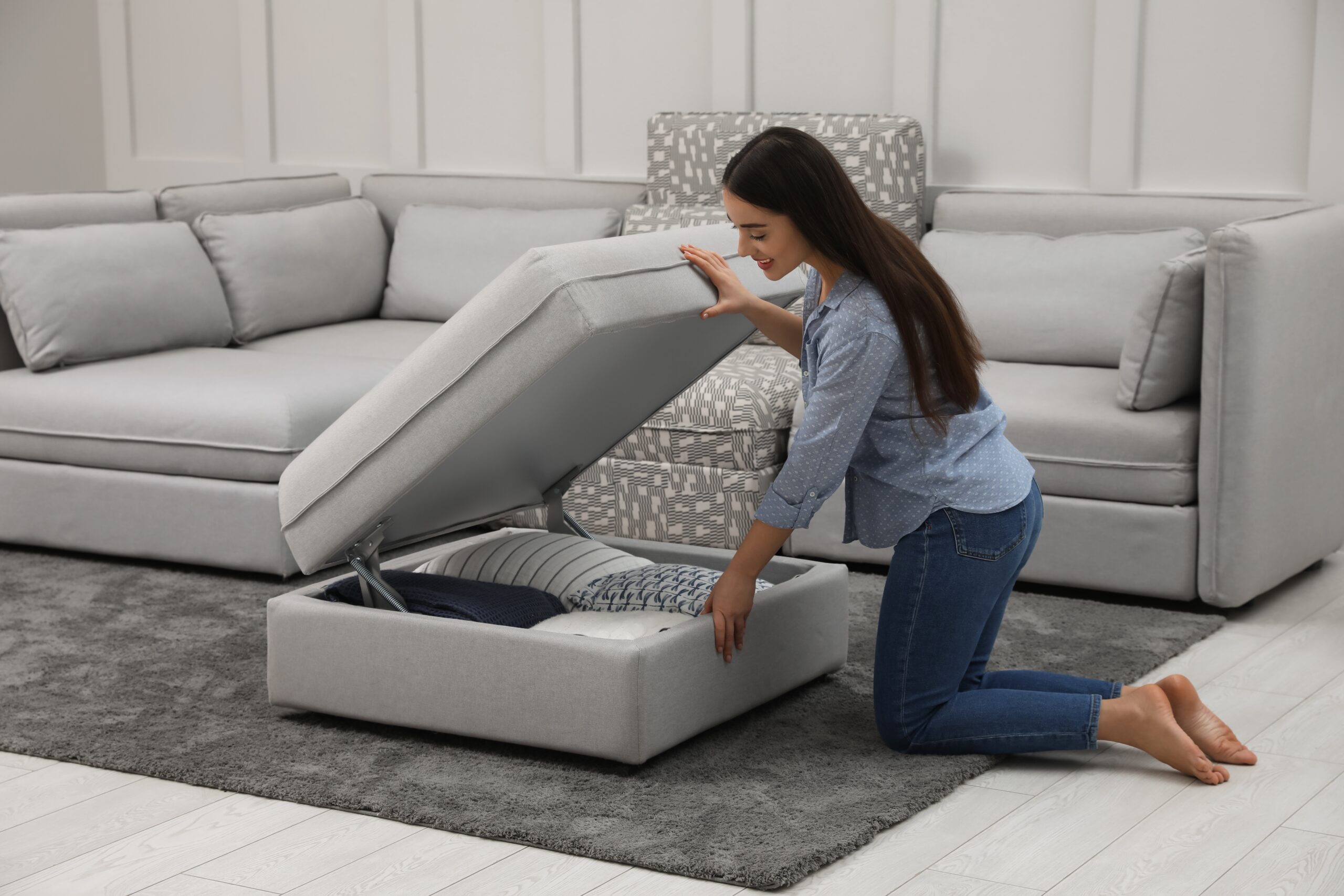Article takeaways
- Storage unit flipping is when you bid on an abandoned unit, sort through the contents, and resell them for a profit. Abandoned storage units are profitable if you approach the bidding and reselling process with a strategy, though it’s always a gamble.
- When deciding which unit to bid on, green flags include an organized unit, visible electronics, appliances, tools, or furniture in good condition, and storage facilities with enhanced security features that are located in a nice part of town. Red flags include messy units with viable trash, storage units in sketchy locations, and signs that someone was living in the unit.
- Factor storage unit cleaning time, disposal costs, and the effort it takes to resell valuable or useful items across multiple platforms when you’re budgeting your bid limit; be sure to stick to your budget even during the rush of the bidding war.
- Maximize profits by selling collectibles on eBay, common-but-useful furniture and household items on Facebook Marketplace and Craigslist, clothing on thrift apps like Poshmark, and trading in functional electronics via retailer buy-back programs.
- When flipping storage units, you typically only have 24 to 48 hours to clean out and reset the abandoned unit. For maximum profits, use SelfStorage.com to find an empty unit nearby and load anything that might be sellable into the empty unit, so you can clean, refurbish, and resell it at your leisure.
When we think of storage units, we tend to think of a safe space to store our belongings indefinitely.
When we think of flipping storage units, the first thing that comes to mind for storage auction fans is probably an image from a storage unit show like Storage Wars.
And with the cost of living rapidly rising, there will probably be an increase both in renters getting locked out of their storage units and the need for an extra side hustle income stream.
But that same cost of living makes rolling the dice on a side hustle like property flipping storage units tricky. And despite the success of storage unit auctions portrayed on storage reality shows like “Auction Hunters” and “Storage Wars,” most storage unit flips barely break even, and many even lose money.
You might not find anything but trash in the storage unit. And if you do find something worth reselling, you’ll have to consider the time and money you spend combing through the leftovers, taking inventory of what’s valuable, and listing it for resale. And that’s not to mention the time it takes to dispose of or donate any trash or anything that can’t be sold.
That’s why we put together this helpful guide to storage auctions. We’ll discuss how to flip a storage unit, starting with how to locate storage unit auctions. We’ll cover how the process of flipping storage units works and how to go about doing it.
We’ll explore the variables and circumstances that decide if auctions on storage units are profitable, how to place a bid, and what to do after you’ve scored yourself a storage unit’s worth of stuff.
Finally, we’ll reveal how SelfStorage.com can help you flip a storage unit.
What is Flipping Storage Units? How to Locate Storage Unit Auctions

Storage unit flipping is when you bid on an entire unit before you get a chance to dig through it. The upside is you get a storage unit full of stuff for a modest price. The downside is that it’s essentially like playing the lottery. The unit could contain some valuable items, but there’s no guarantee.
If a storage unit renter misses a certain number of storage bill payments, the storage facility owners are legally allowed to lock the tenant out of their unit. At this point, storage contracts may give the facility owner ownership of all the items left inside the storage unit.
The storage facility owner is then allowed to sell the unit contents at a storage auction. A storage auction is also called a lien sale because the facility company puts a lien on the tenant’s property. If the storage locker renter doesn’t pay what they owe the store facility within the state-allotted period, or fails to respond to the notice, the storage facility owner is legally allowed to sell the contents of the abandoned storage unit.
The amount of time storage locker renters have to pay to maintain ownership, and how long before the storage unit is auctioned, varies from storage facility to facility, based on the storage facility’s policy and the state lien laws.
- The process begins when a storage locker renter is put in default of payment. In some states, like New Hampshire, the tenant is in default after their rent is over 30 days late. In States with less gracious laws, the period is shorter. In Florida, for example, a storage locker renter is in default after they’re only five days late.
- Once the storage locker tenant is in default, the storage facility manager then gives them a notice that they’re in default, and the notice includes the stated intention to sell the storage unit contents.
- The renter has a certain amount of time, typically two weeks, from the notice date to pay the rent they owe, plus the late fees.
- If they fail to make financial amends and catch up on their payments, or if the storage unit renter fails to respond at all, the storage facility takes ownership of all the storage unit contents.
But since storage facility owners aren’t in the business of appraising and reselling items, they either hire auction companies to auction off the contents of the unit one by one, or they auction off the entire unit to the highest bidder.
Storage unit flipping is a process where you pay a flat price for everything in the storage unit and then resell the contents yourself.
If scoring an entire unit worth of belongings for a low price via storage unit auctions seems too good to be true, that’s because it often is. There’s no guarantee that you’ll make money, or even break even, as you never know what you’ll find in there.
To serious property flippers, the gamble is part of the rush, but if you’re looking for a safe and secure side hustle income stream, storage unit auctions flipping may not be what you’re looking for.
You may find a box of valuable jewelry buried in the unit, but you also may find nothing but battered clothes, old documents, cases of paper towels, and piles of trash. And even if you do score a unit that has a few choice items tucked inside, you have to do the work of cleaning, listing, and selling all the contents yourself, disposing of the trash, and cleaning and resetting the unit by a specific date.
We’ll dive into the specifics of reselling abandoned storage unit contents and cleaning out a storage unit later on. First, for those of you who have experience making money by reselling items, or who love a gamble, let’s take a look at how to locate storage unit auctions.
How To Find Auctions on Storage Units
There are a few ways to find storage unit auctions near you.
For starters, there are local online storage unit flipping communities and Facebook groups like “ Storage Unit Auctions” that stay up to date on storage bids happening in various regions. Other storage unit auction house resources include: StorageTreasures.com, Lockerfox.com, Bid13.com, and StorageAuctions.com.
Self-storage unit auctions may or may not be open to the public depending on the facility and the auction situation. Either way, attending a storage auction typically requires a pre-registration. There are two primary ways storage takes place: attending an in-person storage complex auction, or bidding online. Either way, placing a storage bid usually requires you to be 18 years old and to provide a valid photo ID.
Once you find a unit auction in your area, contact the storage facility and inquire about whether or not you have to register. You can contact the storage facility directly or check their website for online registration options. Use our local storage unit search tool to find the facilities contact information and website.
Online storage unit auctions are more accessible, since you don’t have to carve out time to go to an in-person event. That said, commission fees for online auctions tend to be a bit higher. Besides, bidding online has its risks, since you can’t always see the photos of the storage unit contents clearly, nd you can’t smell the unit to see how well it was maintained.
Storage units that hold valuables are typically more carefully maintained, though not always. Regardless, attending an in-person storage auction lets you assess the condition of the unit and its contents with your own eyes and nose before you place a storage bid.
Now it’s time to start bidding. It’s rare for an auction house to have already procured the unit and sell off the contents one by one. You’re typically bidding on the entire unit, agreeing to take ownership of everything inside.
You may want to familiarize yourself with the most common items found in abandoned storage units before your get into the business of placing storage bids. If you’ve made it this far and are still interested ih trying your luck at a storage ubit auction, its time to find out exactly how to start bidding.
How to Start Bidding on Abandoned Storage Units

So you’ve found a storage auction that interests you. Before you place your bid, you have decided if the storage unit auction is worth the gamble. Let’s take a look at some of the green flags that show some signs of promise, and the red flags that send seasoned storage bidders running away from the auction.
Let’s start with a few tips and tricks you can employ before the auction even starts. Then, we’ll look at how to bid on a storage unit auction.
Green Flags for Flipping Storage Units: Bid Smarter

First, set a budget for yourself. Decide how much you’re willing to spend on a storage unit gamble, and don’t break your rules no matter how high the other bidders go, especially if you’re new to reselling units.
The storage bidding happens fast, and it’s easy to get swept up in the energy of it all. One of the common rookie mistakes new bidders make is getting caught up in the rush of winning and overbidding in a state of excitement.
Remember, in addition to the cost of the bid itself, there’s the time it will take you to refurbish and resell the unit’s contents, and that’s if the unit is a score.
When setting your maximum bid budget, also consider that you will need to clean out the unit and pay for the disposal of any items that can’t be sold, including trash, useless, and broken equipment.
If you’re bidding on a live storage unit auction in person, you’ll want to dress comfortably. A storage complex typically auctions off multiple units on the same day, and you don’t want to rush a storage bid on a unit just because you’re tired, uncomfortable, and ready to get it over with.
At live storage units auctions, the facility won’t let you enter the unit before you place your bid, nor will they let you touch anything. That said, you can look into the abandoned storage units from outside, sometimes through a door window, and at other times through the open door.
Arrive at the auction early so you can scope out the open units before the auction begins. Count the boxes in each unit, write down the unit numbers of the most organized units, the units that smell the cleanest, and the units that have visible valuables.
If there’s an electronic item or a piece of art you can see clearly but are unsure about, use Google Lens to try to identify it and see what similar items are selling for on Facebook Marketplace or eBay.
We suggest you bring a flashlight so you can check for the following signs and be smarter:
- Did you notice any valuable items right away? You may be able to see jewelry boxes and lock boxes, both of which are signs of resellable items.
- Are there any large items you can refurbish even if they don’t work? Pieces of furniture, video game systems, and large electrical appliances may or may not work. That said, you reduce the risk if you see an item you know you can improve, even if it is broken.
- How organized is his storage unit? Someone who took the time to maintain their storage space likely values their belongings more, which may point to a higher quality of items.
Red Flags for Flipping Storage Units: When to Say No
There are also some red flags you can spot early on so you don’t waste time bidding on a unit with a low chance of containing unsellable items.
For starters, if the storage unit is messy, there’s a chance it doesn’t have much value beneath the mess. While there are no hard rules here, it’s common for people storing valuables to keep their items safe by keeping their unit clean and organized. On the other hand, someone who abandoned a disorganized mess of a unit may have used it as an overflow space for items they aren’t going to miss.
Another red flag is if the storage complex is located in a rough part of town. Without judging a book by its cover, put yourself in the shoes of someone renting a storage unit to keep their valuables secure. They’re probably not going to lock thousands of dollars’ worth of personal items in a neighborhood with high crime rates.
By that same token, consider whether the storage unit facility itself has onsite security amenities before you place a storage bid. Someone storing valuable items would probably want a storage unit with surveillance cameras, electronic gates with entry codes, motion sensing lights, or even on-site security personnel.
Finally, if it looks like someone was living inside the storage unit, steer clear. Chances are that a houseless person would have sold their valuables to pay their house payments long before they rolled a sleeping bag out on the floor of their storage unit.
Green Flags and Red Flags When Bidding Online Storage Auctions

Bidding is a bit different during the online storage auction process. For starters, you’re looking at photos and bidding on units remotely, without ever having seen them in real life. This means you can’t smell the unit, and that you’re relying on photos to represent the storage units authentically.
If the photo is clear, you can use the same logic we mentioned above. Scan the photos for storage unit content like electronics and furniture pieces. Research the brands or use Google Lens to find out what the item is worth. Scan the photo for wooden trinket boxes and lock boxes that may contain valuables like jewelry, collectible coins, etc.
One of the major red flags indicating that an online storage unit auction is worth avoiding is if the photo quality is poor. Blurry photos could mean the storage facility owner is hiding something. And even if it’s an innocent mistake, blurry photos make it hard to catch an honest impression of whether the storage unit contents have any value.
Most online auction companies also add descriptions to the units. Another red flag is finding descriptions that don’t match the storage unit photos. Browsing conversations on online storage unit flipping and property flipping communities like r/Flipping and on Reddit and the Storage Unit Auctions Facebook group may give you some pointers.
How to Bid In a Storage Auction
Once you find a unit that meets the expectations outlined above, you place your bid. You can pine for one choice unit, ot you can split your budget up among multiple units. But remember, if you do bid on multiples, there’s a chance you may win and have to pay for both. That also means there are two units you have to comb through and clean out by the deadline.
And don’t spend your whole cash wad all at once. Start low and let other people raise the price. Storage unit bids work the same as any other auction. There may or may not be a starting bid amount. Once someone opens the bid, the amount is set. You have to offer the storage business more money than the previous bidder. There’s a time limit, and when time is up, the highest bid wins.
In the case of storage unit auctions, the highest bidder gets everything inside the storage unit. At a live auction, the storage unit employees are often expecting you to pay cash. In some cases, the storage business gives you 24 to 48 hours to pay up. But in others, the money is due immediately, and if you don’t have it on you, it goes to the next highest bidder.
Online storage unit auction platforms often accept credit or debit cards/ That said, online auction houses will also hit you with added processing fees as high as 15%, depending on the service you’re going through. If you’re unable to clean and prep the unit so it’s like new for a new storage locker renter, you may also need to pay a storage unit cleaning fee.
To help you save on the cleaning fees and to ensure you don’t break any laws or ethics codes or miss out on any profits, let’s take a detailed look at what to do after you’ve won a storage bid.
How to Flip Storage Units After You Win a Bid
Bidding on an abandoned storage unit is a meticulous process to be sure. But if you place the highest bid and win, the pressure kicks up another notch.
Once the auction is settled, the storage facility only gives the winner a small window to empty and clean out the unit. The allotted time varies depending on the differing storage companies’ policies, but it’s typically between 24 and 48 hours.
It’s also a good idea to have all the cleaning supplies beforehand so you’re not wasting time running to the store. Here’s a cleaning supplies checklist of everything you’ll need to clean out an abandoned storage unit:
Click here to download the full checklist in PDF.
You’ll also need to bring your own lock to secure the abandoned storage unit during your trips and while taking food and sleep breaks. We suggest finding a dedicated storage unit space nearby to cross-load items into as you dig through the abandoned unit.
You can often rent a whole month of storage for close to the same amount as the cleaning deposit you’ll have to pay if you fail to reset the abandoned storage unit before the deadline. We suggest renting a cargo van or moving truck so you can move large items, trash, and donations in one ot two trips to save time. You can scratch both these lifesavers off your storage unit flipping to-do list by finding a free truck rental storage unit.
Some storage flippers lose out on big money because they don’t know whether an item is valuable or not, and they run out of time to check. Toss everything that looks even remotely resellable into your second, empty storage unit and worry about it later. You’ll have at least a month to go through it all, ensuring you don’t miss a potential score.
Some of these abandoned storage units are packed full of stuff, so you’ll have to act fast. Let’s take a detailed look at how to clean out a storage unit. Then we can take a look at how to sell any valuable items you find along the way.
How To Clean Out an Abandoned Storage Unit in 24-48 Hours
1. Dig deep
Comb through everything. Every chest, drawer, box, and container. Empty every pocket of every piece of clothing and every compartment of every item you find. Flip through every book, and check every folder, binder, and tag in every item you find.
2. Sort as you go
Make thee piles, one for donations, one for reselling, and one for trash. In the case of cleaning out an abandoned unit, your trash pile should be reserved for literal garbage and bagged immediately into heavy-duty garbage bags.
Anything with even a remote chance of being salvageable or sellable should end up in either the donation or resale piles. Use Google Lens and check the value of everything – including your donation pile – before discarding.
3. Stick to your ethics
If you find personal items like documents, ID cards, private letters, or photos left over from the previous storage locker renter, start a fourth pile of personal items and turn them over to the storage facility manager once you’re done with the clean-out.
4. Schedule donation pick-ups ahead of time
As soon as you win the storage unit auction, see if you can schedule a donation pick-up through Goodwill, Habitat for Humanity, or a smaller local charity. These donation-based charities will often come to you, especially for large items like furniture or appliances.
That said, their pickup days may be limited, and you’re already on a time crunch. But at the very least, you can schedule a time to drop off donation items to them using your rental truck or van.
5. Drop your resale items off at your nearby empty storage unit
With the donations pile taken care of, you’ve two piles left. It’s nearly impossible to sell the resale items within the timeframe the facility gives you to clean out the abandoned unit. As we mentioned earlier, the cost of renting a storage unit nearby for an entire month is often close to the same price as the fees you’ll get charged for leaving the abandoned unit messy.
Load up anything and everything that you think you might be able to sell into your truck and take it to your empty storage unit rental. You can go through it later and figure out what’s fixable or refurbishable. Anything you can’t sell can be donated, at a later date, when there’s no time crunch.
Crossloading your sellable scores into an empty unit also gives you time to sort through them and figure out the best options for selling each item. You’ll rarely find one person who wants to buy everything, even after you’ve verified and separated the valuables.
A second storage unit gives you at least a month to decide on the best course of action for selling each item. For example, Furniture is probably easier to sell locally on Facebook Marketplace or Craigslist. But you can score more for jewelry on Etsy.
6. Dispose of all the trash
While some facilities in the storage industry do keep garbage and recycling dumpsters on site, they typically only permit you to dispose of smaller items. And even so, these are usually reserved for tenants who rent a unit in the facility.
Remember, you bought the contents of the storage unit at the auction, not the unit itself. Storage facility owners won’t always let you use their dumpsters in the clean-out process, and they certainly won’t let you chuck broken appliances and table legs into it.
The solution? Load your rental truck up with all your trash. We suggested relocating your donations and resale piles first, so you don’t soil your truck with the trash. Once you’ve loaded all the trash onto the truck, make a run to the closest dump to the storage unit.
If the dump is far away, you may want to leave the trash on the truck while you complete the final two steps, and then make your dump run last.
7. Clean the abandoned unit
Now, that’s where the rest of your cleaning supply list will really come in handy. To avoid having to pay the storage facility any cleaning fees, clean the storage unit. We suggest moving from top to bottom and cleaning he floor last. Break each wall of the storage unit into smaller, manageable tasks, and obliterate all the grime, odors, stains, and standing water.
Different facilities will have different expectations about how clean you need to leave the unit to avoid any fees. Make sure you understand what they are ahead of time so you’re not hit with any hidden fees.
8. Turn the unit over to the storage facility manager
Take pictures of the clean and empty storage unit and save them for your records. If the storage facility manager is on site when you finish the clean-out, have them view the unit with their own eyes and give you their stamp of approval. If the manager is not on site, send them your pictures via text or email and let them know the abandoned unit has been thoroughly reset by the agreed-upon deadline.
Are Storage Units Profitable? How to Maximize Resale Value from Flipping Storage Units

Flipping storage units can be profitable if you take the time to clean the items you find. You can maximize your profit by selling each item on the appropriate sales channel rather than listing them all in the same place. For example, you can sell a used item with a barcode on Amazon, but a vintage t-shirt will make more on eBay.
Other potential sales channels include eBay, Craigslist, Facebook Marketplace, pawn shops and consignment stores, yard sales, and thrifting apps like ThredUp, Offerup, Poshmark, and Depop.
We suggest taking photographs of each item as soon as you clean it. Then, you can optimize your listing with high-quality photos and detailed descriptions. Last but not least, find similar items listed on the same platform and list your item at a lower price, even if it’s just $5 less. If there are no similar items and you need help figuring out how much each item is worth, try using some online pricing resources like Worth Point and Price Charting.
Remember, the goal isn’t to get rich but to make a small profit. In fact, we suggest simply aiming to break even on the first few units you flip, using them as practice runs while you master the process and learn what to look for when bidding on an abandoned storage unit.
Now that we’ve covered the high-level stuff, let’s take a more detailed look at the process of selling items you score from flipping storage units to help you decide if storage units are profitable for you.
- Be intentional when choosing your resale items: Home in on valuables like vintage clothing, collectibles, antiques, jewelry, and art. Assess each of these items and categorize them based on their condition, exclusivity, and market demand. Anything you scored that’s useful but not valuable can be sold at a yard sale.
- Use trade-in programs for technology: Once you’ve made sure any electronic devices like Smartphones, tablets, and laptops are functional and in decent condition, wipe them clean. Electronic retailers often offer trade-in credit or even cash for old devices that are still functional. You’ll often get more through retail trade than on Craigslist or eBay, and you don’t have to wait for a buyer to come along.
- Download thrifting apps: Thrifting apps like ThredUp, Offerup, Poshmark, Depop, and Mercari are a great tool for clothes, tools, and household items that are in decent to good condition.
- Sell locally on Facebook Marketplace: You can maximize profits on furniture and useful household items by posting them on the local section of Facebook Marketplace, Facebook shops, or on various Buy and Sell groups specific to your area. A great way to move common-but-useful items fast is to lowball the asking price or to add OBO – or best offer– after your asking price and be open to negotiating.
- Pawn shops and consignment stores: If you clean and repair tools, music equipment, video game consoles, fancy home decorations, furniture, and clothing that’s in good condition, you can take them to a pawn shop or a consignment shop. Keep in mind that both pawn shops and consignment shops are profit businesses. Whether they pay you up front or sell the item on your behalf, they’ll either pay you a percentage of what they plan to sell the item for or take a cut once they sell it.
- Used book store: Sell any books you find at a second-hand book store. Used book stores will typically buy books in bulk, which is a great opportunity if you find a whole box. That said, used book stores will typically only buy books if the spine and both covers are intact and the book isn’t missing any pages.
- Used video game retailers: You can sell any vintage video games or game systems you score at a used game shop. Clean the games before you get there. Even if you’re not sure if the games work, the used game store will test them before they buy them.
- Post an ad on Craigslist: Similar to Facebook Marketplace, Craigslist is a great place to sell useful household items and furniture that isn’t necessarily rare, but is cleaned up and fully functional. Craiglist doesn’t have the same buyer transparency that Facebook offers, so you’ll have to be wary of scammers. We suggest refraining from sharing personal info, always meeting your buyer in a public space, and only accepting cash payments.
- Make an eBay account: When it comes to posting on eBay, you’ll want to tweak your product description using SEO keywords that match popular user search queries. You can use the auction format to encourage users to outbid one another, or you can list it at a fair price with an “OBO” beside it. High-quality images will come in handy on eBay. To harmonize with eBay’s algorithm, post one listing a day from the same account rather than posting all at once. Last but not least, on eBay, you can bundle similar low-value items together to sell them off in bulk, as a “box of miscellaneous toys,” for example.
- Promote to your personal network: Whether you posted an item for sale on eBay, Facebook Marketplace, Craigslist, or on a thrift app, make a post on your socials advertising your listing. Not only can this send your friends, family, and acquaintances running to the item listing on its respective platform, but linking to your listing on socials and generating engagement, it can also help keep your post trending and in clear view for the platform users.
- Yard sale: If all else fails, or if everything you scored while flipping storage units is common or low-value, you can throw a yard sale. Appeal to seasoned bargain hunters in your area by pricing reasonably and organizing your sale into clear and attractive category-based sections. Promote your yard sale with signs or posters around the neighborhood, on social media, and even in the local newspaper.
Flipping Storage Units using Selfstorage.com
So, in the end, are storage units profitable? Flipping storage units is profitable once you learn the strategy and apply it, but not if you’re gambling and bidding on units at random. Start small and learn the hustle to simply break even for your first few auctions. Keep in mind that it takes significant time, effort, and attention to detail.
Our guide will help you get started, but ultimately, your success at flipping storage units requires experiential knowledge, so you’ll need to dig in and practice while managing your expectations, especially in the early days. The key is to sell each item in the ideal place, and the more you sell across the various platforms available, the more you’ll figure out which items sell faster and for money on which platforms.
But as we said up top, you only have so much time to sell each unit. You need time and space to go through your items, clean them up, and try different selling strategies. If an eBay listing isn’t hitting hard, try posting it on Facebook. If a consignment store is lowballing you on a vintage Metallica shirt, try posting it on a thrift app.
Also, the market fluctuates. So even valuable items may not sell right away. We suggest booking a climate-controlled storage unit in a centralized location.
The centralized location lets you use the unit as a home base to store all the keepers you find at the storage unit auctions. The climate control ensures you can store valuable art and furniture, and collectibles like comic books and vinyl records, without moisture and extreme temperatures damaging them before they sell.
But not all storage units are created equal. So, how do you find a storage unit with the amenities you need that’s also in the ideal location? Easy. SelfStorage.com is here to help.
For starters, you can use our storage unit size guide to find the storage size you think you’ll need to start flipping through storage units.
Or, just punch your zip code into our handy SelfStorage.com search tool, and we’ll limit the search results based on the amenities you set. Need a specific size unit to fit all your storage flip scores? How about 24/7 access, so you can unload the items you scored from the abandoned unit at all hours of the night? Or a drive-up ground-level unit to make unloading furniture a breeze?
What about a storage unit with electricity so you can run lights and power tools to refurbish your scores right then and there?
Our search tool limits your results using the amenity filters you set. Book a self-storage unit in your area today using selfstorage.com, and let the storage unit flipping adventure begin!








